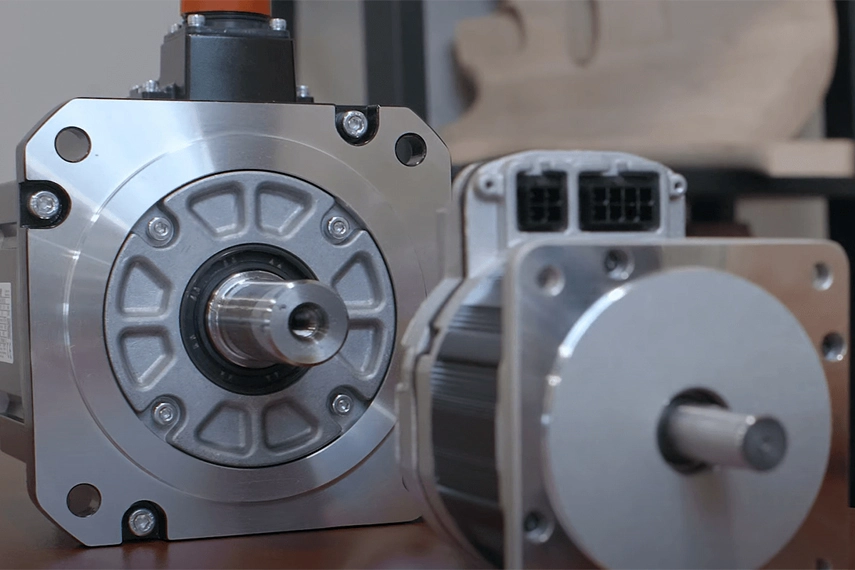Servo Motor Liquid Intrusion Protection
2024-09-05 15:03:32
Servo motors are integral components in many automation and control systems, providing precise control over motion and positioning. These motors often operate in challenging environments where exposure to liquids, such as water or corrosive chemicals, is a concern. Liquid intrusion can lead to severe damage, affecting the performance and longevity of servo motors. Therefore, understanding and implementing effective liquid intrusion protection measures is essential for maintaining motor reliability and operational efficiency.

Importance of Liquid Intrusion Protection
Servo motors are used in a wide range of applications, including manufacturing, robotics, and transportation. Many of these environments expose motors to potential liquid contamination, which can result in:
- Corrosion: Liquids can cause rust and deterioration of metal parts, compromising the motor's structural integrity.
- Electrical Short Circuits: Liquid ingress into electrical components can lead to short circuits, causing malfunction or failure of the motor.
- Reduced Performance: Contamination can affect the motor's bearings and windings, leading to decreased performance and efficiency.
- Increased Maintenance Costs: Regular repair and maintenance are required to address issues caused by liquid intrusion, increasing operational costs.
Ingress Protection (IP) Ratings
The Ingress Protection (IP) rating system, defined by the International Electrotechnical Commission (IEC) standard IEC 60529, classifies the degree of protection provided by enclosures against various environmental factors, including liquid intrusion. The IP rating is represented by two digits:
- First Digit: Indicates the level of protection against solid particles (e.g., dust).
- Second Digit: Indicates the level of protection against liquids (e.g., water).
For servo motors, the second digit is particularly relevant. The higher the number, the better the protection. Common IP ratings for servo motors include:
- IP54: Protected against dust ingress sufficient to prevent interference and against water spray from any direction.
- IP65: Dust-tight and protected against water jets from any direction.
- IP67: Dust-tight and protected against temporary immersion in water up to 1 meter.
Methods of Liquid Intrusion Protection
Sealed Enclosures
Sealed enclosures are designed to prevent liquid ingress by providing a physical barrier around the motor's internal components. These enclosures are typically constructed from materials such as aluminum or stainless steel and are fitted with gaskets and seals to ensure a tight closure. They are effective at preventing liquid entry, protecting the motor's internal components from contamination and damage.
Coatings and Conformal Coatings
Coatings are applied to the motor's internal components to create a protective layer that resists liquid intrusion. Common coatings include epoxy, polyurethane, and silicone-based materials. These coatings provide an additional layer of protection, particularly useful for protecting circuit boards and electrical components from moisture and chemicals.
Drainage Systems
Motors designed for environments with high moisture levels may incorporate drainage systems to expel any liquid that manages to penetrate the enclosure. These systems often include drainage holes or channels to direct water away from sensitive components. Drainage systems help to minimize the impact of accidental liquid ingress and prevent accumulation of moisture within the motor.
Ventilation and Breathable Membranes
Ventilation systems and breathable membranes allow for air circulation while preventing the entry of liquid contaminants. These systems are designed to equalize pressure and allow heat dissipation while filtering out liquids. They are useful in environments with high humidity or where temperature fluctuations could cause condensation inside the motor.
Regular Maintenance and Inspections
Routine maintenance and inspections are crucial for detecting early signs of liquid intrusion and addressing them promptly. This includes regularly checking seals, gaskets, and coatings for wear and integrity, and ensuring that the motor's enclosure remains in good condition. Prompt identification and resolution of potential issues can help prevent significant damage or operational failures.
Case Studies and Applications
Food and Beverage Industry
Challenges: High exposure to water and cleaning agents can lead to significant wear and tear on servo motors.
Solutions: Motors in this industry often use IP67-rated enclosures and food-grade coatings to ensure resistance to liquid intrusion and ease of cleaning.
Automotive Industry
Challenges: Exposure to various liquids, including coolant and oils, is common in automotive manufacturing and testing environments.
Solutions: Servo motors used in this industry are typically equipped with robust sealing and drainage systems to handle liquid exposure effectively.
Marine and Offshore Applications
Challenges: High humidity and direct exposure to seawater present severe challenges for servo motor protection.
Solutions: Motors used in marine environments often feature high IP ratings, corrosion-resistant materials, and specialized coatings to withstand harsh conditions.
Best Practices for Implementing Liquid Intrusion Protection
Selecting the Appropriate IP Rating
Consider the Environment: Choose a motor with an IP rating suitable for the specific environmental conditions it will encounter. Higher IP ratings provide better protection but may come at an increased cost.
Regular Maintenance
Scheduled Inspections: Implement a maintenance schedule to inspect and maintain protective features such as seals and coatings. Address any signs of wear or damage promptly.
Proper Installation
Follow Guidelines: Ensure that motors are installed according to manufacturer guidelines to maintain their protective features. Proper installation is crucial for achieving the intended level of protection.
Training and Awareness
Educate Personnel: Train maintenance personnel and operators on the importance of liquid intrusion protection and the procedures for maintaining and inspecting protective measures.
Conclusion
Effective liquid intrusion protection is essential for maintaining the performance and longevity of servo motors in environments prone to liquid exposure. By understanding IP ratings, employing appropriate protective measures, and adhering to best practices for maintenance and installation, one can ensure that servo motors continue to operate reliably and efficiently. Protecting servo motors from liquid intrusion not only prevents damage but also enhances overall system performance and reduces maintenance costs, contributing to the success of automation and control applications.
See What Lunyee Can Do For You
Contact Us
- 8619149417743
- +86-0371-5562 0274
- [email protected]
- Zhengzhou, Henan Province, China
- Mon-Fri: 9:00 - 18:00




